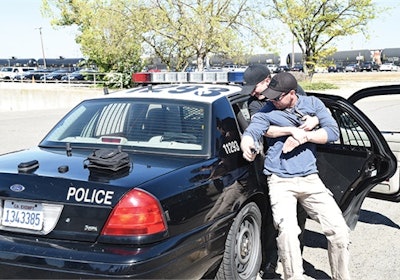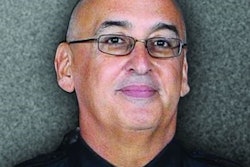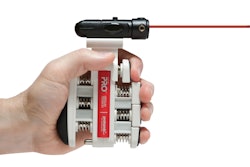
There is a paradigm shift happening in the public's expectations of how law enforcement handles medical emergencies. The days are over where officers stood around calling for medical aid on their radios while a victim or even suspect bled to death. The public expects officers to render aid and attempt to save lives.
Law enforcement upper management is also very concerned about how officers can best care for themselves and fellow officers if they are shot while on duty. The command staffs of law enforcement agencies that have officers working in remote areas are especially concerned about providing officers with expanded medical training because the response time for EMS may be much longer in the areas where these agencies work than it is in urban areas. As we all know, any delay in medical care during a life-threating situation can have catastrophic results.
Beyond First Aid
Until recently the medical training officers received in most law enforcement academies rarely went beyond basic first aid and the medical kits placed in patrol cars did not contain the necessary equipment to deal with wounds caused by penetrating trauma.
Many were also not eager to render even the limited first aid they had been taught. These officers had the mindset that attempting to provide any medical care would get them in trouble. Furthermore, many officers were told by their supervisors not to get involved in medical care for fear of being sued, fired, and/or put in jail.
Many agencies now are providing training to officers on how to use trauma kits to save the lives of victims, suspects, fellow officers, and even themselves. And they are expected to render such medical response under difficult and dangerous conditions.
There are basically two types of situations where a law enforcement officer may need to provide emergency medical care. The first one is a person in need of aid where there are no threats, such as an isolated traffic accident. The other, is where threats exist; examples include a bank robbery, home invasion, or active shooter incident.
Law enforcement personnel are taught that the tactical situation always has priority over any medical care and the top priority of responding officers to an active shooter situation is to rapidly locate the active shooter or shooters and stop the killing. Once the shooter or shooters have been neutralized, officers may need to render aid to stop massive blood loss of the victims.
Unfortunately, street patrol officers often don't have the necessary equipment and training to handle penetrating trauma until fire and EMS arrive. Which means wounded people can wait a significant amount of time before receiving treatment. This can be further complicated by the fact that fire and EMS are often reluctant to enter the scene if they are not convinced that the area is absolutely safe to enter, during which time an officer or victim could bleed to death.
Even when EMS arrives on the scene, confusion can lengthen the amount of time injured people have to wait for care. In addition, critical information necessary for proper care and eventual trauma center management is fragmented and diluted in the chaos.
This is what happened in the immediate aftermath of the 2007 Virginia Tech University massacre in Blacksburg, VA. EMS did not have direct communication channels with law enforcement and the command post, which hindered effective medical response.
Causes of Death
Some people question how much medical response a law enforcement officer with limited emergency aid training can provide to a seriously wounded person. And it's true that officers can't do as much in the field as EMTs and paramedics. However, it's also been demonstrated that quick response by properly trained officers can save lives. It's happening nationwide as you read this article, and the reasons this response is so effective have been actually studied by experts in emergency medicine.
Retired Army Colonel Ronald F. Bellamy studied massive amounts of collected battlefield data and came to the conclusion that there are three potentially preventable causes of death by penetrating trauma. And each of these potentially mortal effects of penetrating wounds can be mitigated by responders with very limited medical training.
Uncontrolled Hemorrhage. These victims bleed to death because there is no intervention or attempt to stop the bleeding, or the intervention is not done properly with direct pressure or the application of a tourniquet. An excellent example of this was the approximately 2,500 soldiers who died in the Vietnam War from simple extremity wounds. In Bellamy's study some 60% of the preventable deaths were caused by uncontrolled hemorrhage.
Tension Pneumothorax. After a victim has suffered a penetrating injury to the chest, a progressive buildup of air can occur. This is usually secondary to an injury such as a gunshot wound or stab wound. The air escapes from the torn or lacerated lung and moves into the area between the chest wall and the lung called the pleural space.
A life-threatening condition begins when the air cannot return to the lung and with each breath more and more air accumulates in the pleural space. Essentially, what has happened is the creation of a one-way valve.
Progressive buildup of air pressure in the pleural space pushes the heart and the major blood vessels exiting and entering the heart to the opposite side of the chest and obstructs venous blood returning to the heart. This leads to circulatory collapse and eventually death if not treated quickly.
Standard response for relieving a tension pneumothorax is emergency needle decompression with a 14-gauge angiocath-type needle. The objective is to insert the needle into the second intercostal space at the mid-clavicular line and release the air. This converts the tension pneumothorax into a simple pneumothorax, which is typically not a life-endangering situation. Bellamy found that 33% of preventable combat deaths from penetrating wounds were caused by tension pneumothorax.
Airway Obstruction. Rarely does a victim of penetrating trauma suffer an obstruction of his or her airway other than vomit or blood in the airway or a mechanical obstruction from dentures or a foreign body. A gunshot wound to the neck could result in an expanding hematoma of the neck, but this is an extremely rare event. Victims that are unconscious benefit from the simple insertion of a soft rubber tube through the nose called a nasopharyngeal airway (NPA). This response creates a temporary emergency airway in most victims.
Bellamy's research showed that 6% of preventable deaths from penetrating wounds resulted from airway obstruction.
One of the most serious of all penetrating chest injuries occurs when a bullet rips open a hole in the chest wall, entering the lung and causing it to collapse. The victim gasps for air, has extreme difficulty breathing, and frothy blood often bubbles from the wound. Unless the hole in the chest is patched, the lung is unable to re-expand. This is an open chest wound or what is commonly called a "sucking chest wound." These wounds require an immediate occlusive dressing. The best option is to apply a commercially available vented chest seal.
Easily Learned Skills
Training law enforcement officers in some advanced emergency medical skill sets will, without a doubt, save lives. In a brief period of time officers can be taught how to apply a tourniquet correctly and use a clotting agent or pressure dressing to stop massive bleeding. Occlusive dressings or chest seals are easy to apply and require only minimal training. Nasopharyngeal airways can be inserted by officers with instruction by medical professionals.
The needle decompression for relieving a tension pneumothorax is also a simple procedure with minimal risks and easily taught and mastered. One of the toughest things for most people to work through is the person's initial pain reaction as you insert the needle. What the responder has to realize is that the victim has been shot, and already has one or more holes in his or her chest from a gunshot wound. That's why inserting a small needle in this person's chest wall will not harm the person especially, if he or she is short of breath, having difficulty breathing, and dying. The small bit of pain the person experiences from the needle insertion can bring great relief.
Most states have regulations covering emergency medical response by first responders. In California, Title 22 governs the medical scope of practice for lifeguards, peace officers, EMTs, and paramedics.
A recent needed revision to this California law now allows peace officers to use tourniquets and clotting agents on victims of penetrating trauma. Many patrol officers as well as law enforcement upper management in the state have taken the position that "Blue Lives Matter" and a further revision of Title 22 is needed to allow California's peace officers the ability with proper training and education to perform a needle decompression under exigent circumstances, especially on fellow officers.
The counterargument on the EMS side is that law enforcement officers can't retain these skill sets because of a lack of ongoing practice. In 2008 a medical study was conducted by Matthew D. Sztajnkrycer, MD, Ph.D. at the Mayo Clinic in Rochester, MN, to assess the ability of non-medical law enforcement personnel to learn how to decompress a tension pneumothorax and to determine long-term knowledge and skill retention.
After filling out a pre-intervention questionnaire, a total of 22 tactical team operators completed a 90-minute training session in recognition and management of tension pneumothorax. Post-intervention testing was performed immediately following the training, and one month and six months post training.
The published results of the study showed that knowledge retention persisted at one and at six months post training, without significant decrement. Sztajnkrycer's conclusion was that non-medical law enforcement personnel are capable of learning needle decompression and retain this knowledge without significant deterioration for at least six months.
This study clearly demonstrates that law enforcement officers can learn advanced medical skills and retain them.
Saving Blue Lives
Recent developments in military prehospital penetrating trauma response have stressed the importance of early recognition and treatment of a tension pneumothorax. The U.S. military has instituted an intermediate level of care between the first-aid skills that are taught to all soldiers and the medical skills of the corpsman or medic. The Combat Lifesaver Course skill set is taught to non-medical personnel and includes training in needle decompression of a tension pneumothorax. Law enforcement should follow the military's lead.
As an emergency physician and reserve police officer in California, I have been involved in the training and education of law enforcement personnel for more than 20 years. Through this experience, it is my perception that the vast majority of the current generation of law enforcement officers is very interested in learning advanced medical skills, and as first responders, they believe it is their duty to render the best medical aid possible.
Lawrence E. Heiskell, MD, FACEP, FAAFP is an emergency physician and reserve police officer with the Palm Springs Police Department. A member of the POLICE Magazine Advisory Board, Dr. Heiskell is the founder and director of the International School of Tactical Medicine. The school offers an 8-hour Law Enforcement Tactical Life Saver Course for patrol officers, an 80-hour (2-week) Tactical Medicine course, and an alternative 40-hour Tactical Medicine Course for tactical medics, all of which are approved by California POST and the U.S. Department of Homeland Security.













